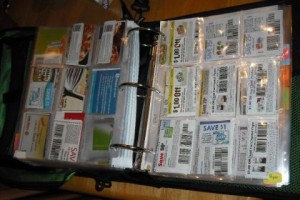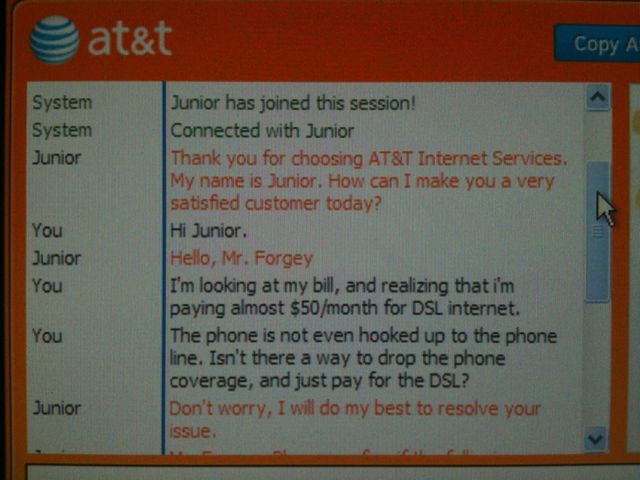 Last week I reviewed The Grocery Game, a real-world application to help trim your household food budget. To give personal insight, I recently interviewed my neighbor, Julie. A teacher by trade, Julie has transitioned to stay-at-home motherhood with the addition of her first child. Moving from duel-income to a sole breadwinner while adding an extra mouth to feed means big sacrifices and careful planning with your household budget.
Last week I reviewed The Grocery Game, a real-world application to help trim your household food budget. To give personal insight, I recently interviewed my neighbor, Julie. A teacher by trade, Julie has transitioned to stay-at-home motherhood with the addition of her first child. Moving from duel-income to a sole breadwinner while adding an extra mouth to feed means big sacrifices and careful planning with your household budget.
Julie is the textbook definition of a home economist, and a big winner in The Grocery Game. Here’s what she had to say about her experience in coupon cutting:
Why did you start using The Grocery Game. Were there rough patches initially?
I have always loved to save money and get a bargain. I had tried in the past to use coupons, and at times got great deals. The problem I ran into was that I was spending a tremendous amount of time finding the deals and then trying to find the coupon I was sure I had clipped. I had heard about the Grocery Game and a couple of years earlier I actually gave it a trial run. I wasn’t successful at it then because I didn’t have a good system for organizing my coupons, and I didn’t understand the idea of stockpiling.
So what changed where The Grocery Game became a success for your family?
Well, two years and a baby later, and down to one income we needed to lower expenses, and I decided to do it again. I did a bit of research and figured out how to set up a coupon binder, and went at it whole heartedly. I have gotten our monthly grocery bill down to $130, and in the last 5 months I have saved over $5,600 while spending under $1,500.

How do you like it so far?
I love it!!! Many people hate the idea of paying for a site to help you have money. Please, please, please believe me: it is worth every penny! The site does all the work for you, all you have to do is clip your coupons, print your list, and head to the store. The time savings is huge. I want to spend all the time I can with my daughter, not looking at sale ads. The GG has allowed me to do this. Plus, how can you not love saving TONS of money!
What were you spending on food each month, and what are your spending goals with GG?
I had a monthly budget of $500 for all food and supplies, including going out to eat, previous to GG. I have gotten our bill down to $130/mo, and it is only that high because I choose to go to Sprouts once a week and spend between $10-$15 on fresh produce and nuts. It’s kinda like my little treat for saving so much money. My stockpile could last 3-4 months, possibly longer. We only go out to eat 1-2 times a month. Now I put $250 in my food envelope per month, and I have money left over at the end.
Was it a rough transition learning to sort & cut all those coupons?
When I began GG I was buying 4 newspapers a week. This way I could build my stockpile faster. If you have a larger family you may want to buy more, but 4 is a good place to start. Setting up your coupon binder is really important. I watched You Tube videos to get an idea and then set it up in a way that made sense to my brain. I got a heads up from other couponers to pull apart the inserts and stack them, then cut them. This is a HUGE time saver! Do this and you will never go back! It also allows the coupons to be sorted before you clip! Now I spend about 30 min. a week clipping my coupons and putting them into the binder. Not bad.
How much time per week would you say you spend preparing (coupon cutting, list sorting, etc.) and how much time actual shopping?
I spend 30 min. cutting and sorting, and shop for about 2 hours (including travel). I get my list together, and only buy what is on the list. I go to Sprouts on Wednesday’s because it is double ad day and more is on sale. This is where I am at now. However, when I began I probably spent 10 hours a week. I also spent $500 getting my stockpile going, and I would hit every store each week. There is a bit of a buy in, but just set your budget and do what you can. If I had understood CVS and thier ECB (Extra Care Bucks) program, I probably would have spent half of that. Oh well, live and learn.
What stores are in your shopping rotation?
Currently I shop at Target, Kroger, CVS, Walgreens, Albertson’s, Tom Thumb, and Sprouts. I go to Target 2-3 times, Kroger 2 times a month, CVS 2 times, Walgreens 1 time, Albertons twice, Tom Thumb once or bi-monthly, and Sprouts weekly. Of course it does vary, but I would say that is about average.
2.5 hours? That’s not long at all! Do you have any other tips on saving time cutting coupons?
Many people wonder how I do it in such little time. I have found sites that post the deals and then I mimic them. This saves tons of time! Here are the best sites for me:
A Full Cup (visit the forums)
Swag Grabber
Hip 2 Save
Christine’s Coupons
Happy Couponing!
Feel free to comment or ask questions below on this interview with Julie. If you’d like to sign up for The Grocery Game, use her e-mail address as a reference: sharpjulie [at] ymail [dot] com.

Follow me on Twitter!
Budget
Budget, coupons, food, The Grocery Game
















Most Recent Comments